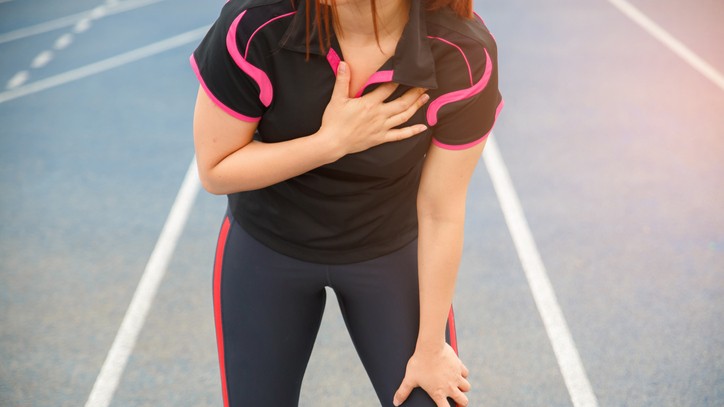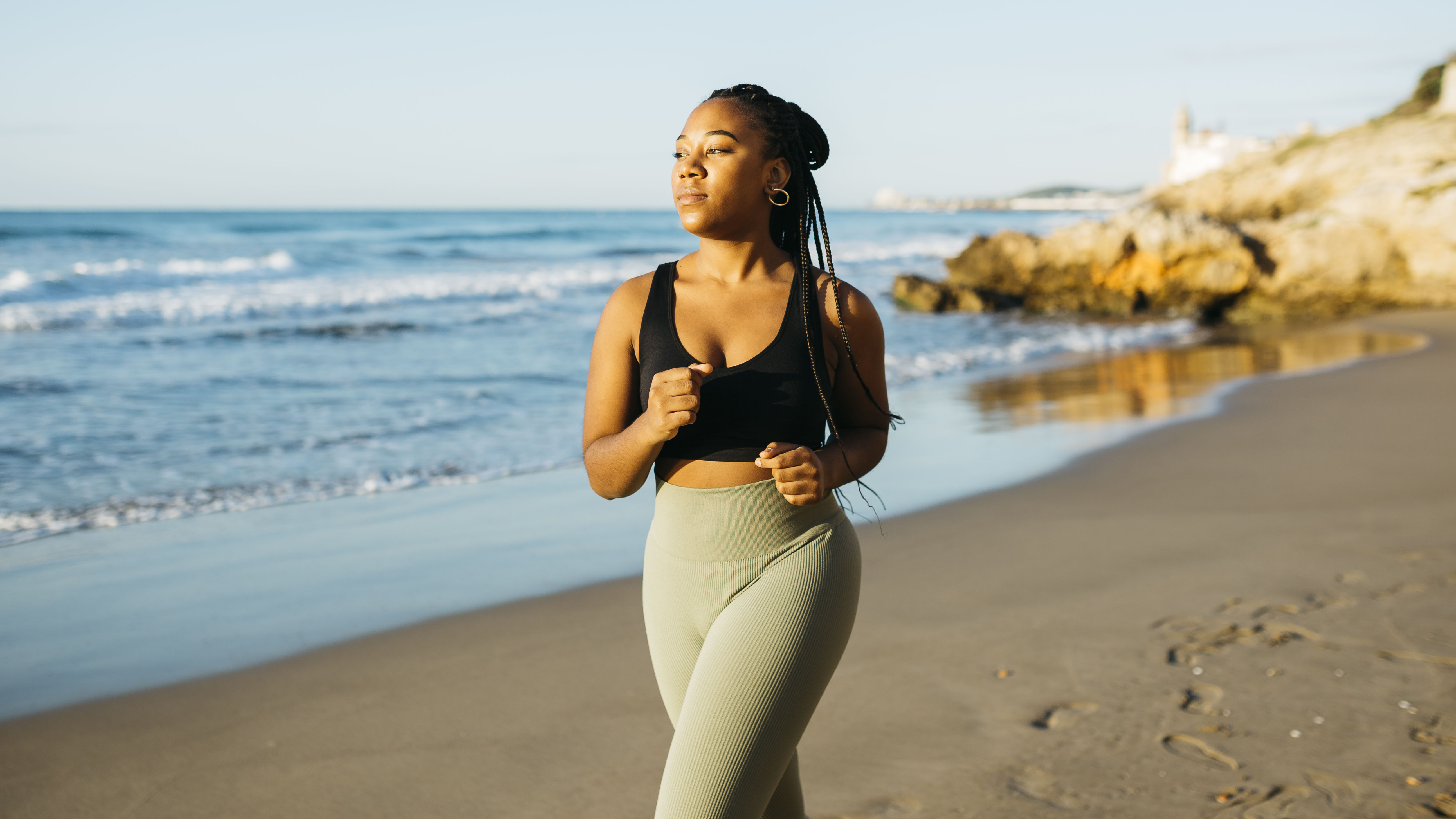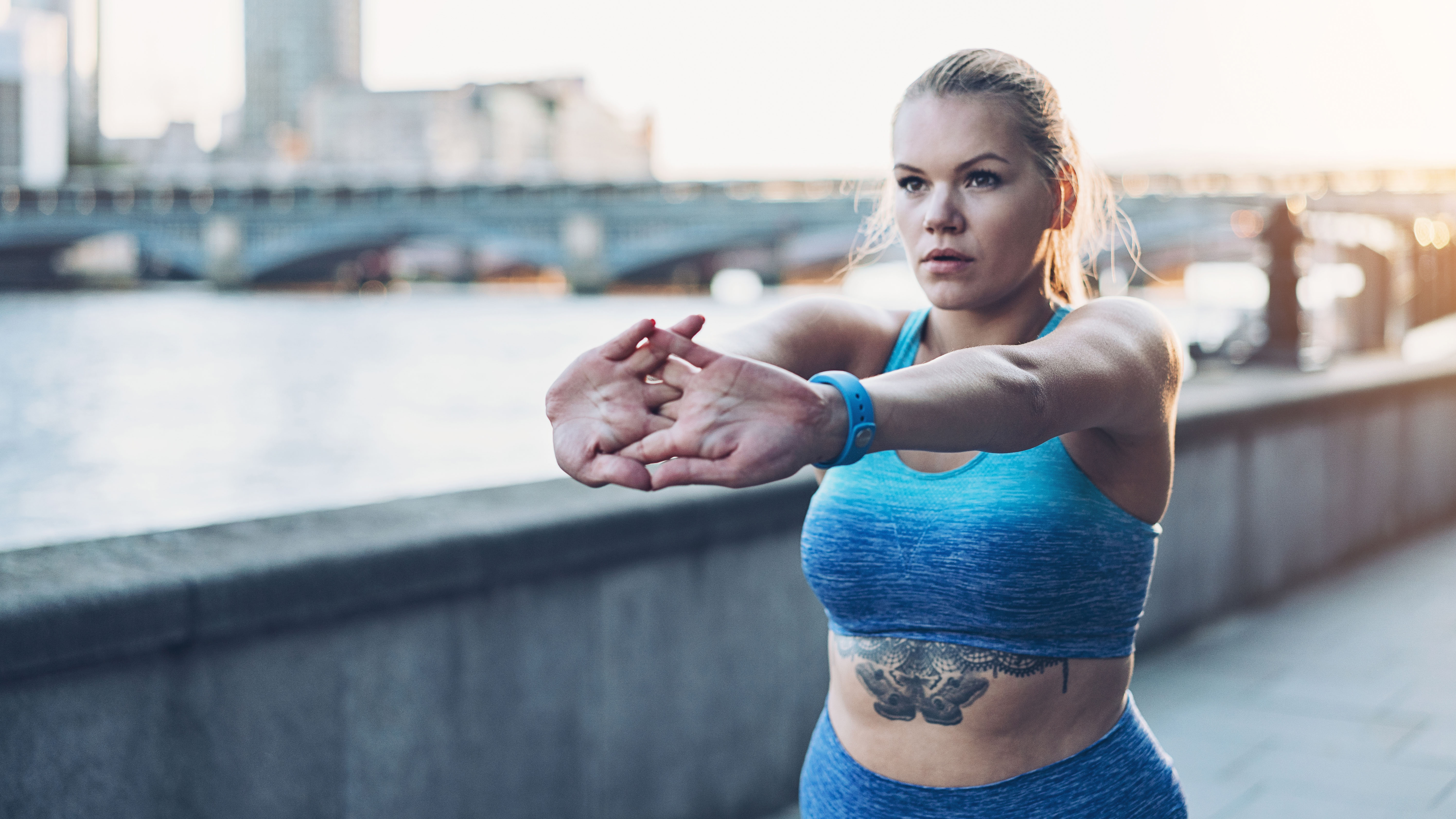How to avoid breast pain when running
How to avoid breast pain when running: tips and tricks to stay pain-free on your next run

The question of how to avoid breast pain when running is a common one. While many of us love the physical and mental health benefits that running brings, the breast pain that can accompany it is something we could all live without.
Breast pain (also called mastalgia) when running is not that surprising when you consider how much — and how many directions — they move during exercise. “Breast pain during running is linked to the displacement of breasts, so not just the up and down movement, but also side to side and forward to back,” says Michelle Norris, a senior research associate in the department of sport and exercise science at the University of Portsmouth in the UK
In fact the university’s Research Group in Breast Health found that breasts could move an average of 10cm in three different directions during running. That’s where the best sports bras for running can help, particularly as a study conducted by the University of Portsmouth also revealed that if breasts are not properly supported during running, they experience the same G force as an F1 driver and could undergo potentially damaging skin stretch.
As you might expect, women with bigger busts tend to experience more displacement and suffer with more discomfort, so it’s worth checking out the best sports bras for large breasts deals to ensure you have the extra support that you need when you’re running. But women with smaller breasts can still experience stretching and damage of the Cooper’s Ligaments — the ligaments that hold the breasts onto the chest wall.
So what is the secret to avoiding breast pain when running and getting this discomfort off your chest once and for all? We spoke to ultra runner and running coach Alex Parren to find out.
What causes breast pain when running?
“The main reason breasts hurt when running is tension on the skin and ligaments caused by movement: studies (such as this one published in the BMJ) have conclusively found that they move in a complex pattern that includes up and down, side to side, and forwards and back motions, which is what causes the pain,” says Parren.

A BJSM study into female marathon runner’s found that 32 percent experienced breast pain and this was significantly related to cup size and was greater during vigorous exercise when compared with a moderate workout.
Get the world’s most fascinating discoveries delivered straight to your inbox.
Can breasts be permanently damaged by running?
Alex says: “Breasts are naturally supported by ligaments called Cooper’s Ligaments — named after the surgeon who first described them. There’s no muscle in breasts to keep them in place — they’re attached to the pectoral (chest) muscles by these ligaments. What this means is that if these become stretched or damaged, the breasts can sag. Running puts a huge strain on these ligaments and can permanently damage them.”
How can you best avoid breast pain when running?
There's a persistent myth that sports bras are bad for you – but the opposite is true.
“The best way to avoid breast pain when running is by investing in a highly supportive sports bra. Even if you have smaller breasts, your Cooper’s Ligaments still need support and a properly-fitting sports bra is the only way to achieve this.”
BraStop’s bra fitter Katie Weir says: ”Sports bras in bra sizes are the best way to ensure maximum support as you get the correct, firm band size to hold and support you from the underband (where 80 percent of normal and sports bra support should come from) and the cup will encapsulate your breast tissue to avoid fall out and squashing!
- Read more: What is jogger's nipple?

“A wide back band on a sports bra and cushion straps/hook and eye will ensure the most comfort in areas which can rub as you exercise. I think the best way to avoid breast pain when running is by wearing a professionally fitted sports bra — no boobs are too small for a bra fitting! Even a B cup has breast tissue which will move when running and create chaffing if not supported correctly.”
How do you know if your sports bra fits correctly?
Before you lace up your running shoes, strap on one of the best running watches and start pounding the pavement, you’re going to want to make sure that your sports bra fits correctly and provides your breasts with the support they need to prevent discomfort.
“There are a few tests you can do to make sure your sports bra fits correctly. You should be able to fit two fingers between your shoulder and the strap to ensure it’s not too tight to inhibit breathing,” says Parren.

“There should be no wrinkles in the fabric — it should fit flat and smooth against your skin. Finally, make sure the band around your ribcage fits snugly as this will do a lot of the supporting. When you first try on a new sports bra, do a quick test by bouncing or jumping up and down on the spot to see if your breasts hurt before you even take it out for a run.”
“Once the supportive ligaments and tissue in the breasts are damaged or stretched, they can’t snap back to how they were — they will be permanently damaged. This means it’s paramount you wear a well-fitting sports bra every time you exercise, especially if you have larger breasts.”

Maddy Biddulph is a freelance health and fitness journalist with over 26 years of experience working for consumer media in the US and UK. As a Level 3 personal trainer and weight loss advisor she is used to trying out and reviewing the latest health and fitness products. At Maddy Biddulph Personal Training, she runs one-to-one and small group sessions, as well as group exercise classes. She specializes in mobility work with seniors and runs regular chair workouts in her hometown of Oxford.


